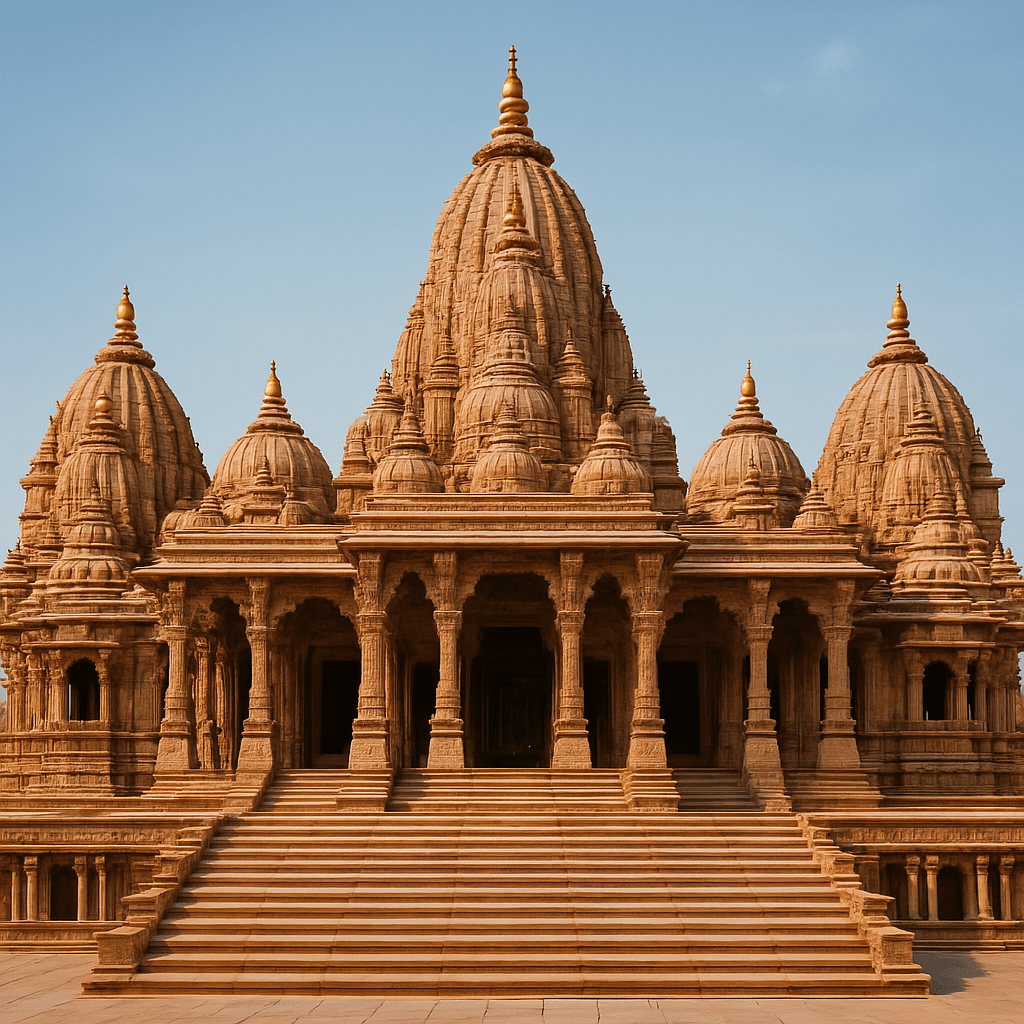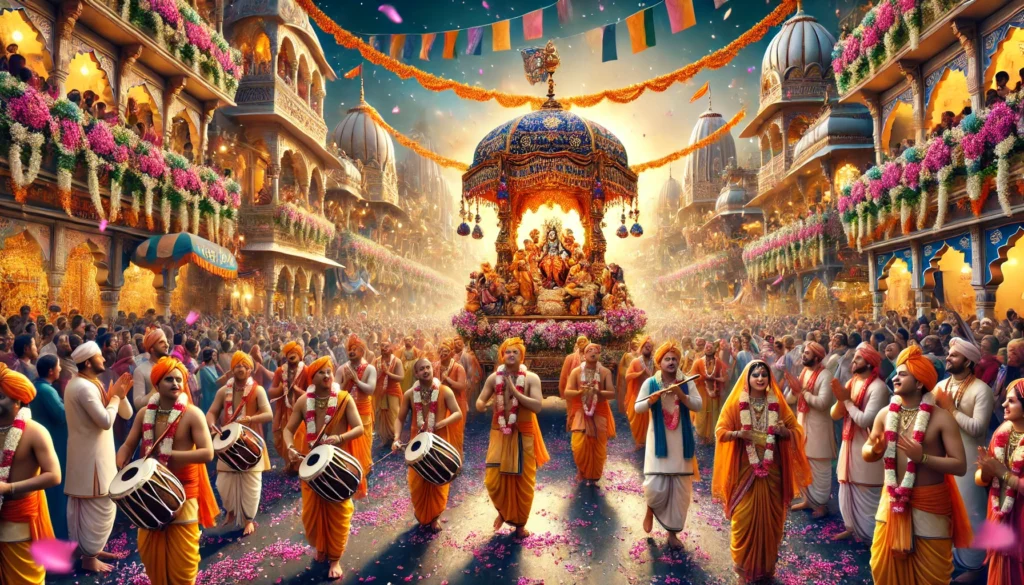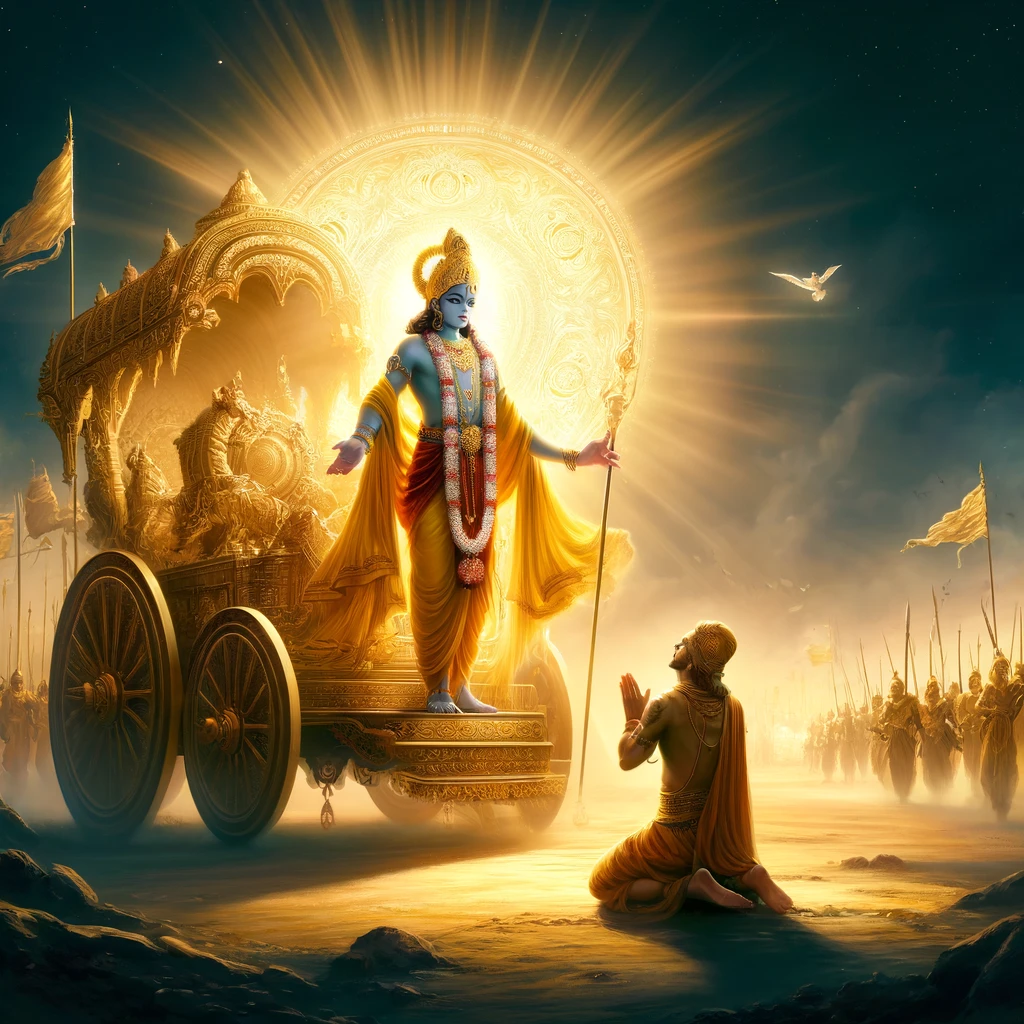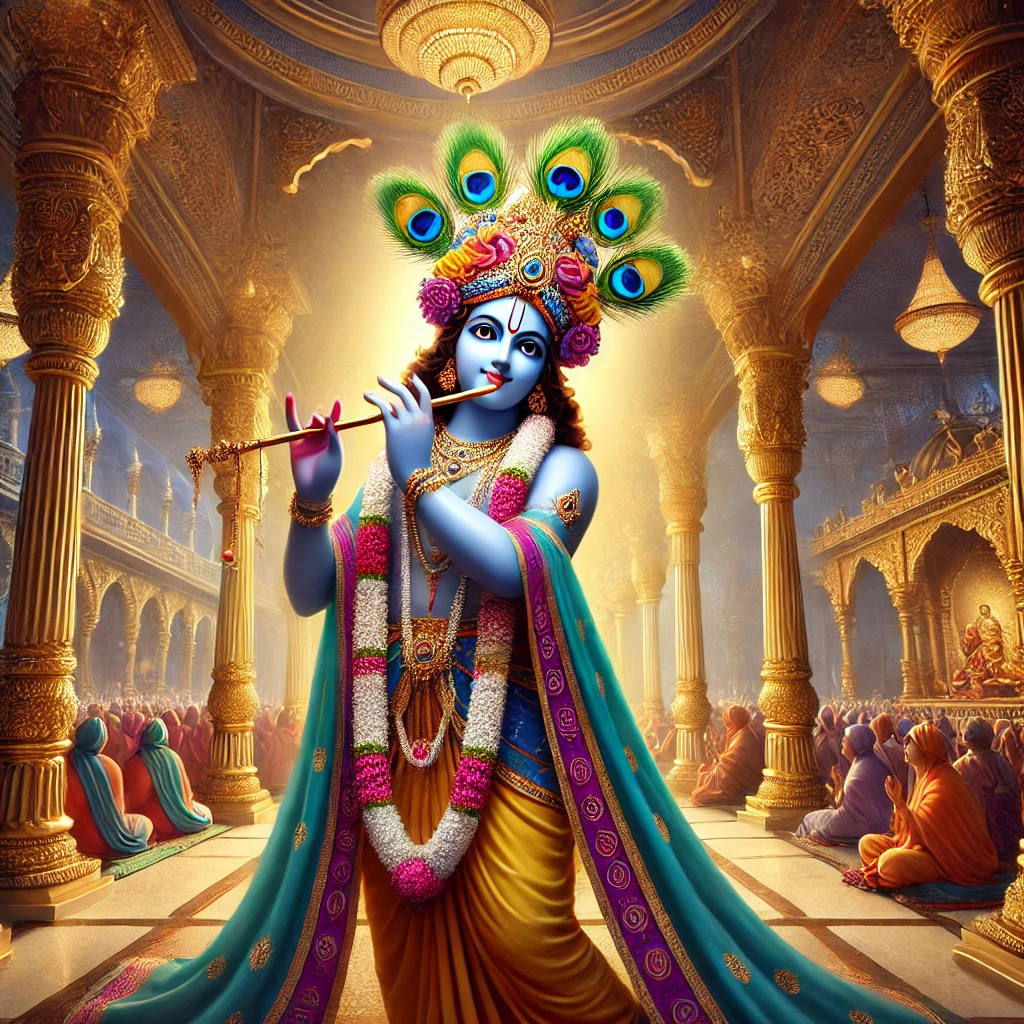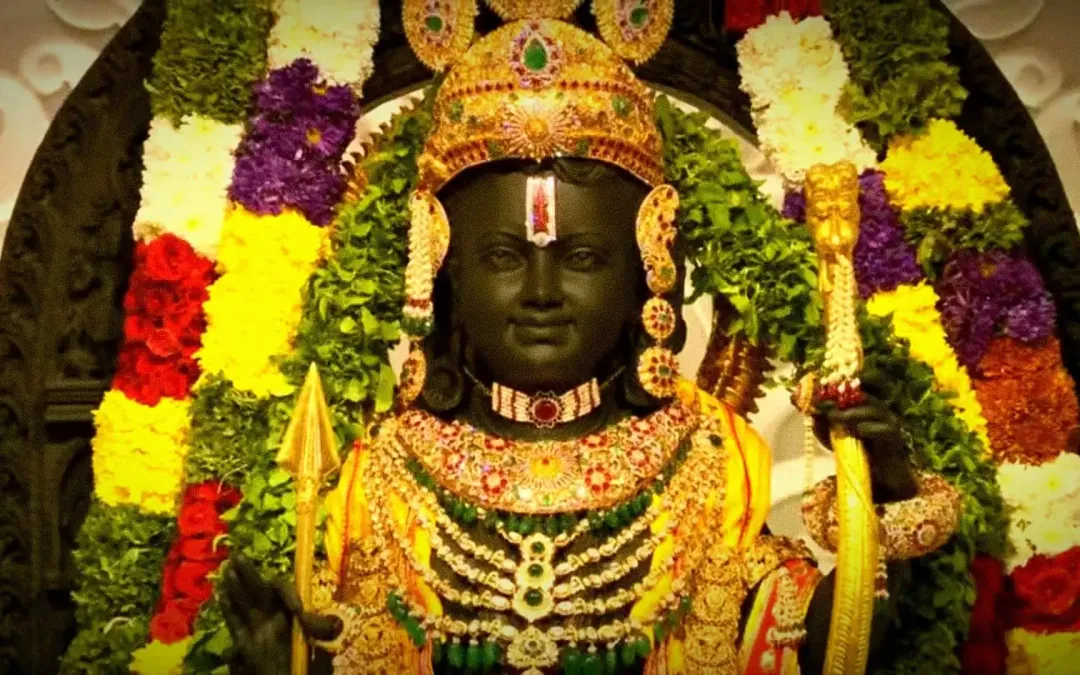The awakening that can transform our hearts, our lives, and our world.
The inauguration of the Rama temple through the prana-pratishtha ceremony of the Rama Lalla deity in the historic place of Ayodhya has created an extraordinary awakening within India — not just among Indians in India, but Indians all over the world. Even non-Indians across the world have taken notice with a galaxy of international dignitaries attending the ceremony.
Some cynical people may ask, “In India, there are already so many temples — why do we need one more temple? And why make such a hue and cry about one particular temple?” So, I’ll talk about the significance of this temple from four perspectives signified with the acronym CAPS. A cap is what people wear on their head, and caps refer to the multiple ways in which this particular achievement is bringing about a change in the consciousness that’s going to provide shelter, that’s going to provide a crowning symbol, that’s going to bring about a transformation.
India is the only place in the world where a civilization that existed thousands of years ago is continuing even today with a striking level of continuity.
C: Cultural reawakening
There is an incredible awakening of bhakti fervour that has few precedents in recent historical memory or maybe even in distant historical memory. The extent of celebrations with the chanting of the names of Lord Rama, with kirtans, with people spontaneously crowding not just Ayodhya to have darshan of Rama Lalla but also all over India and indeed beyond India, celebrating by lighting lamps, is extraordinary. This cultural awakening is actually a re-awakening because such bhakti was an integral part of the fabric of India for millennia. And central to that legacy was the life-story of Lord Rama as conveyed in the Ramayana,
Very few books have influenced the human mind as much as the Ramayana. Indeed, how many other books can claim to have shaped the lives and minds of over a billion people for millennia? So, this is the legacy of Ramayana, and that cultural legacy has been celebrated in multifarious ways on this occasion.
A: Architectural reawakening
India had so many holy places that were marked by beautiful, exquisite, magnificent temples. Unfortunately, intolerant invaders targeted these temples and destroyed them so that they could proclaim their religious hegemony. So much architectural wonder and treasure is forever lost because of that. Unfortunately, the civilizational wounds caused by the past cannot be corrected. And in dealing with those wrongs, the descendants of those invaders shouldn’t be targeted in any way.
Nonetheless, India is the only place in the world where a civilization that existed thousands of years ago is continuing even today with a striking level of continuity. In today’s Egypt, there is practically nothing of the Pharaohs. In today’s Greece, there is nothing of the Greek civilization of the past. There is no agitation to build, say, a temple to Jupiter or Venus over there because those are not deities that are worshipped anyway there. The point is that there is a remarkable civilizational continuity that is unique in the world. And to preserve these remarkable historical phenomena, those places which are of incredibly important historical significance for this historically resilient civilization need to have their glory restored. For example, at the place where Lord Rama appeared millennia ago, the temple over there which had existed for long was destroyed, as indicated by archaeological surveys and confirmed by legal cases. Now after five hundred years of endeavours, it has now been reconstructed. This signifies a turning point, maybe even an epoch-making point in the architectural reawakening of India.
Since India’s Independence, many extraordinary temples have been built in India and outside India. Srila Prabhupada was a pioneer in building magnificent temples in India, and subsequently, many others have built temples all over. Still, the temple in Ayodhya has no parallels in terms of its sheer historical significance to heal the wounds of the past and to boost the civilizational confidence through an architectural structure that is visible and remarkable.
Rama-rajya comes not just by establishing Rama in a temple; it comes by establishing Rama in our hearts.
Since India’s Independence, many extraordinary temples have been built in India and outside India. Srila Prabhupada was a pioneer in building magnificent temples in India, and subsequently, many others have built temples all over. Still, the temple in Ayodhya has no parallels in terms of its sheer historical significance to heal the wounds of the past and to boost the civilizational confidence through an architectural structure that is visible and remarkable.

P: Patriotic reawakening
Rather than deriding this temple simply as the pursuit of a political agenda or any other divisive agenda, we can appreciate that the icon of Lord Rama has the potential to unify everyone. Lord Rama’s pastimes depict his expertise in bringing about unification that expands beyond even human society where monkeys and bears and squirrels and vultures were unified under one banner of service.
India is an extraordinarily diverse country not just in terms of religion but even region, caste, and ethnicity. Yet Lord Rama indeed is the great unifier. While the patriotic sentiment that has been triggered among millions and millions of people may coincide with India’s rising stature on the global geopolitical stage, it is also a reawakening of the realization that India has a destiny in the world to fulfil. India that has survived several hundreds of years of foreign invasion is now thriving. Before the British invasion, India had nearly one fourth of the world’s GDP if we calculate in today’s terms. India is now re-awakening to its own glory, but the glory of India is not a fascistic or an intolerant glory. It arises from an inclusive ethos wherein the prosperity of India is shared with others, indeed with everyone. And that brings us to the last part of the acronym CAPS.
The temple in Ayodhya has no parallels in terms of its sheer historical significance to heal the wounds of the past.
S: Spiritual reawakening
Spiritual reawakening is probably the most important re-awakening that is required if all the previous re-awakenings are to be sustained and are to lead to a significant transformation. Srila Prabhupada said, “There is no use of crying for world peace unless there is an awakening of divine consciousness within the individual.”
Lord Rama demonstrates through his own example how even when wars must be fought with people who are incorrigibly wicked, those wars don’t need to be escalated beyond what is necessary. Even though Ravana had abducted Sita and had refused to return her despite repeated warnings, Rama showed that his purpose was not to destroy the rakshasa dynasty; it was only to free that dynasty from the control of a demoniac ruler. He did not annex Lanka. Instead, he arranged for Lanka to be ruled by another king from the same dynasty. His purpose was not territorial expansion. His purpose was the restoration of dharma, which is social, political, and ethical order.
We too can take this example of Lord Rama and raise our consciousness toward the spiritual level, whereby we recognize that the establishment of the Rama temple is not meant to give us some brownie points in a game, be they cultural or architectural or patriotic. It is meant to inspire us to raise our own consciousness, to purify our own hearts, to inspire us to become instruments in the hands of the divine so that each one of us can fulfil the destiny that God has for us. (Bhagavad-gita 11.33)
When we strive to become such instruments in the hands of the divine, then each one of us can find within us talents and abilities that we didn’t know we had, and we can attract from outside resources and opportunities that we could only have imagined. Being thus empowered internally and externally, we all can contribute to playing our part in bringing about the order of virtue. That is the way to establish Rama-rajya, the celebrated rule of Lord Rama, where peace, prosperity and purity prevailed.
Rama-rajya comes not just by establishing Rama in a temple; it comes by establishing Rama in our hearts. It comes by re-envisioning our own identity as spiritual beings who are eternally parts of the divine and who are meant to become instruments in the hands of the divine. It is this awakening that can transform our hearts, our lives, and our world.
Chaitanya Charana Dasa is the associate-editor of Back to Godhead (US and Indian editions). To read his daily Bhagavad-gita reflections, please subscribe to Gitadaily on his website, thespiritualscientist.com.
This article has been published with permission and consent from Back-to-Godhead magazine. For more information on this article, please visit Back-to-Godhead magazine website.
Hare Krishna Hare Krishna Krishna Krishna Hare Hare
Hare Rama Hare Rama Rama Rama Hare Hare

